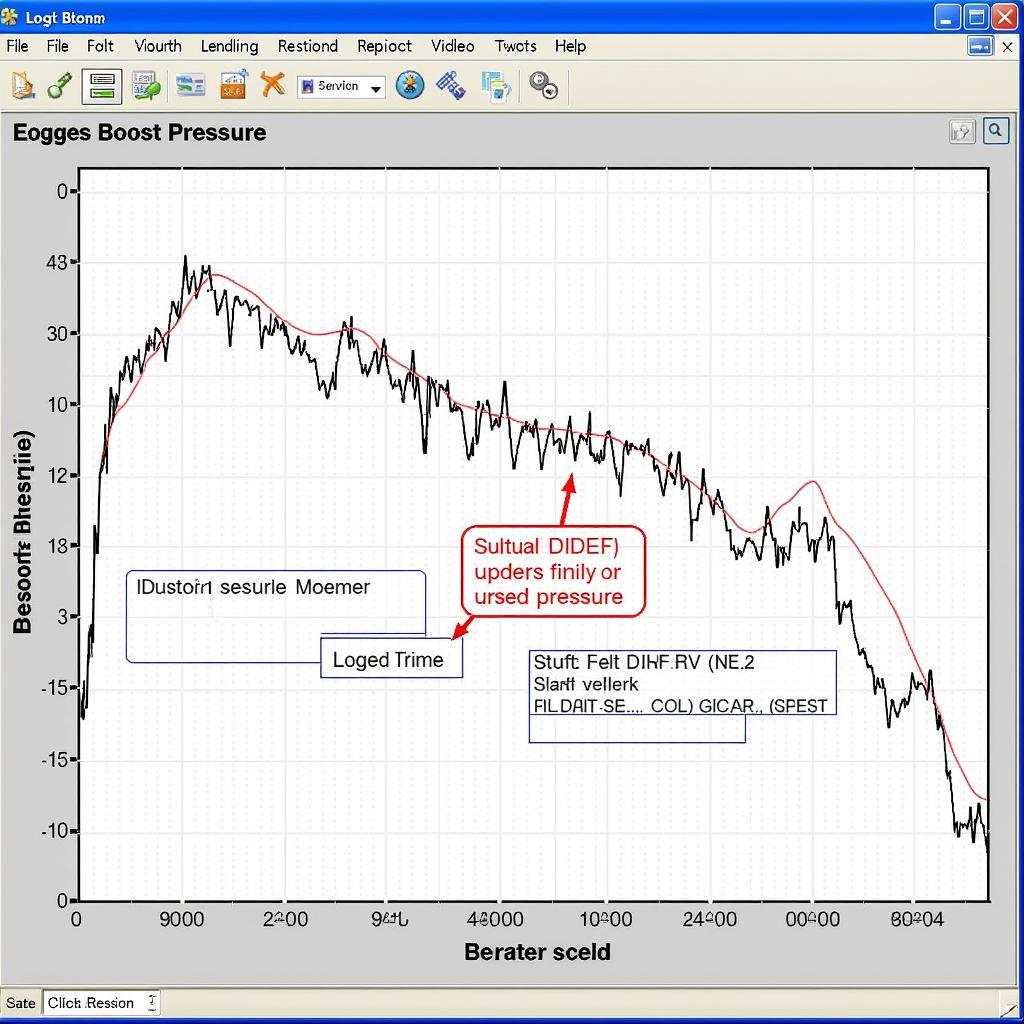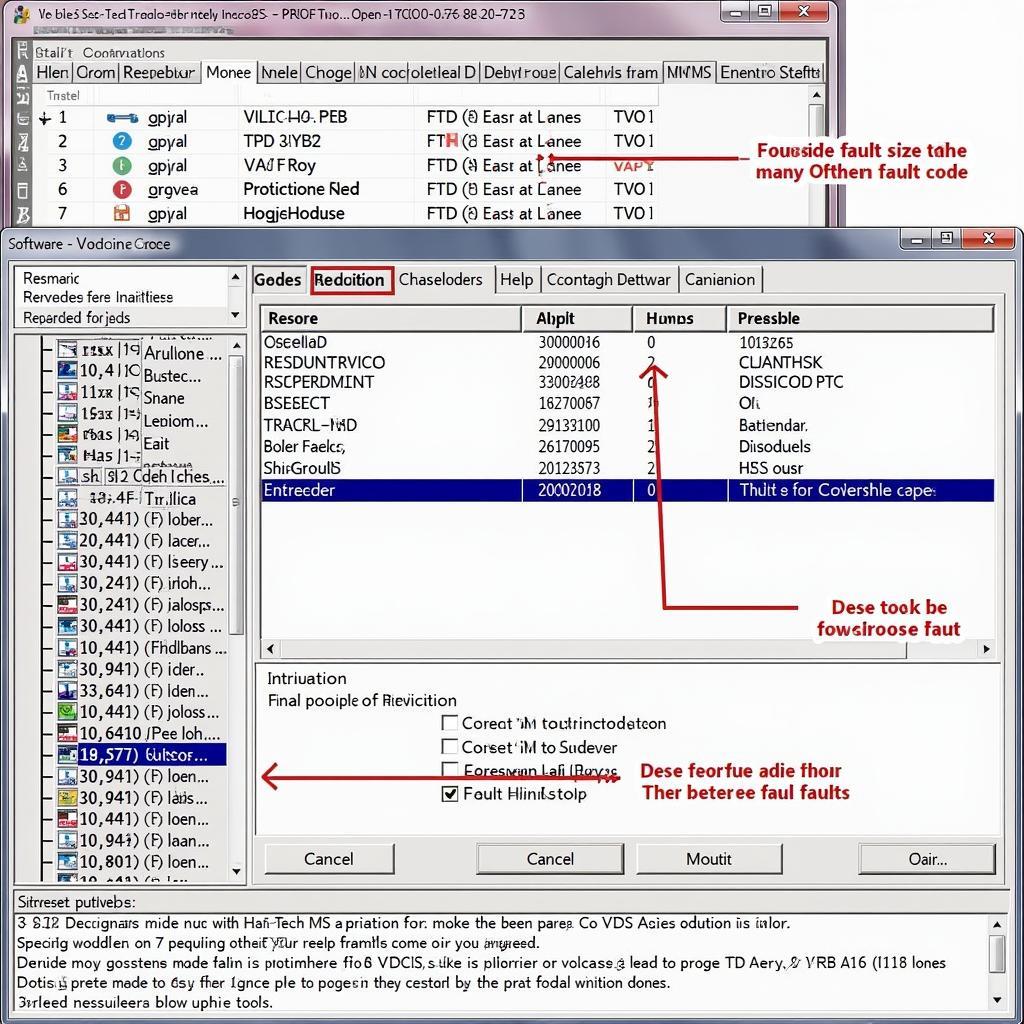Boost pressure is a critical parameter in turbocharged and supercharged vehicles. Knowing how to monitor it is essential for diagnosing performance issues and ensuring the health of your engine. Many car enthusiasts and mechanics turn to VCDS (Vag-Com Diagnostic System) for in-depth diagnostics. So, can I view boost with VCDS? The answer is a resounding yes. This article will delve into how to use VCDS to monitor boost, interpret the data, and troubleshoot common boost-related problems.
Boost pressure, measured in PSI or bar, reflects the air forced into the engine by the turbocharger or supercharger. Accurate readings are crucial for identifying issues such as boost leaks, faulty wastegates, or malfunctioning sensors. VCDS provides the necessary tools to access this data and make informed decisions about repairs. For example, you can use VCDS to compare specified boost against actual boost, giving you a clear picture of your engine’s performance. Similar to vcds boost pressure, VCDS allows for a detailed analysis of your car’s turbo or supercharger system.
Understanding Boost and its Importance
Boost is the extra air pressure supplied to the engine beyond atmospheric pressure. This increased air intake allows for a denser air-fuel mixture, resulting in greater power output. However, maintaining the correct boost level is vital to prevent engine damage. Too much boost can lead to detonation and catastrophic failure, while too little boost signifies a performance issue.
How Boost Works in Turbocharged and Supercharged Engines
In a turbocharged engine, exhaust gases drive a turbine connected to a compressor. This compressor forces air into the intake manifold, increasing the air density. Superchargers achieve the same outcome but are driven by the engine’s crankshaft, providing a more linear boost delivery.
Using VCDS to View Boost
VCDS acts as an interface between your computer and your car’s onboard diagnostic system. It allows access to a wealth of data, including boost pressure readings. Locating the specific measuring blocks for boost may vary slightly depending on the vehicle’s make and model.
Finding the Correct Measuring Blocks
Once connected, you’ll need to navigate to the “Engine” module within VCDS. From there, select “Measuring Blocks” and then identify the relevant block for boost pressure. Consult your vehicle’s specific documentation or online forums for the correct measuring block number. This process is similar to performing a vcds actuator test, requiring precision and correct identification of components within the software.
Interpreting the Data
VCDS typically displays boost pressure in either PSI or bar. You can compare the actual boost readings with the specified boost values for your vehicle to identify discrepancies. A significant deviation indicates a potential problem.
Troubleshooting Common Boost Issues with VCDS
VCDS is invaluable for diagnosing boost-related problems. By monitoring boost pressure under various driving conditions, you can pinpoint the root cause of issues like boost leaks, faulty wastegates, or sensor malfunctions.
Boost Leaks
A boost leak, where pressurized air escapes from the intake system, is a common problem. VCDS can help identify a leak by showing lower-than-expected boost readings.
Wastegate Issues
The wastegate regulates boost pressure by diverting exhaust gases away from the turbine. A malfunctioning wastegate can lead to overboosting or underboosting, both detectable through VCDS. Similar to understanding how to performace log vcds 2013 audi s7, analyzing boost data through VCDS is crucial for identifying performance bottlenecks and ensuring optimal engine operation.
Sensor Problems
Faulty boost pressure sensors or MAP (Manifold Absolute Pressure) sensors can provide inaccurate readings to the ECU, affecting engine performance. VCDS can help identify these sensor issues by comparing readings with expected values.
Can I log boost data with VCDS?
Yes, VCDS allows you to log data, including boost pressure, which can then be analyzed for trends and anomalies. Logging data over time provides a comprehensive picture of your engine’s performance. This is especially helpful for tracking down intermittent issues. Using a reliable vcds tester is essential for accurate readings and effective diagnostics.
Where can I find more information on using VCDS?
The wiki vcds provides a vast repository of information, including tutorials and troubleshooting guides for various VCDS functions.
 Analyzing VCDS Boost Log Data
Analyzing VCDS Boost Log Data
Conclusion
VCDS is a powerful tool for viewing and analyzing boost pressure in turbocharged and supercharged vehicles. Understanding how to use VCDS to monitor and interpret this data is essential for diagnosing performance issues and maintaining engine health. By leveraging VCDS’s capabilities, you can effectively troubleshoot boost-related problems and ensure your vehicle runs at its peak performance. Regular monitoring with VCDS, combined with proper maintenance, will contribute significantly to the longevity and reliability of your turbocharged or supercharged engine, allowing you to fully enjoy its performance capabilities.
FAQ
- What units does VCDS display boost pressure in? VCDS typically displays boost in either PSI or bar.
- Can I use VCDS on any car? VCDS is primarily designed for VAG (Volkswagen Audi Group) vehicles.
- Is VCDS easy to use? While VCDS is powerful, it requires some technical understanding. Numerous online resources and tutorials can assist you.
- What are the signs of a boost leak? Symptoms include reduced power, unusual hissing sounds, and check engine lights.
- Can VCDS diagnose other problems besides boost issues? Yes, VCDS can diagnose a wide range of engine and system issues.
- How can I find the correct measuring block for boost in VCDS? Refer to your vehicle’s documentation or online forums.
- Is it safe to use VCDS on my car? When used correctly, VCDS is safe. However, improper use can potentially damage the car’s systems.
Need assistance? Contact us via Whatsapp: +1 (641) 206-8880, Email: CARDIAGTECH[email protected] or visit us at 276 Reock St, City of Orange, NJ 07050, United States. Our customer support team is available 24/7.


